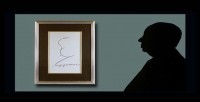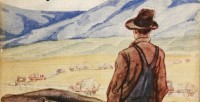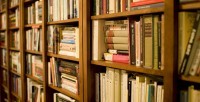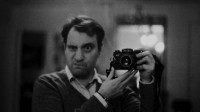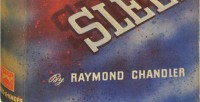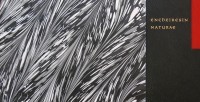Virginia Woolf is on people's minds this week, as Monday was the anniversary of her marriage to Leonard Woolf, who spent his life caring for her and founded the Hogarth Press largely so Virginia could publish without the aggravation of dealing with an outside publisher's demands. One of Virginia Woolf's most-influential works -- if not at the time, then it's certainly become so in the years since her death -- is the essay "A Room of One's Own." So that seems an apt place to begin this week's selection of featured items. A Room of One's Own (First Edition) by Virginia Woolf London:: Hogarth Press, 1929. First edition. A classic of feminist literature, her most famous and influential work. Faint offset on endpapers, otherwise fine in near fine dust jacket with professional touch up to few chips and tears. (Offered by Quill and Brush) Further reading: In 2014, ABAA Member Sunday Steinkirchner of B&B Rare Books, Ltd. acquired several books by Virginia Woolf from Vanessa Bell's personal library. Read Sunday Steinkirchner's essay on acquiring this remarkable group of association copies... Roots (Signed, First Edition) by Alex Haley Garden City, NY: Doubleday & Company, Inc., 1976 First edition, limited issue of 500 numbered copies. Signed by Haley on the limitation page. Finely bound in the publisher's brown morocco, spine lettered and ruled in gilt, top edge gilt; housed in the publisher's light beige marbled slipcase. Fine; slipcase with some minor wear to the edges, else bright ... [more Featured Items: August]
Can you point to your first book? I can. No, it wasn't the first book I ever read, but it was the first collectible book I ever obtained. It started me on a journey that took me from nascent book collector, when I really had no idea what that meant, to sophisticated book collector, to professional book seller, to member of the Antiquarian Bookseller's Association of America (ABAA). The year was 1967. I was a 19-year-old sophomore at San Jose State University. My girlfriend at that time knew I was a big John Steinbeck freak, having written just about every term paper in high school about him and his works. He was my hero. He died a year later. For Christmas that year she gave me a book -- a first edition of Steinbeck's masterpiece, The Grapes of Wrath. I was thrilled. It was a very thoughtful gift, one that I would never have considered. At that time I knew nothing about collectible books, but let's take a peek at this specific book, which I still own, to see what I may have missed 48 years ago. My first thought is that it's missing the dust jacket which Elmer Hader so ably illustrated. Even a beginning book collector knows this is a major problem, a major flaw, but this missing dust jacket meant nothing to me back in 1967. The cloth of the front and back cover has stray ink marks. Kind of ugly, eh? The spine panel is both faded and darkened. It's far from being a sharp copy. Upon opening to either the front or rear pastedown and free endpapers, it's easy to see that both are... [more My First Book]
We've all been there, living in small spaces made even smaller by the ever-increasing accumulation of books: piles growing like mushrooms from the floor, double-stacked on shelves, laid flat under chairs or sofas. When we eventually escape to a larger apartment or house, we hastily box up the books and it's only upon beginning the reshelving process in our new space that we notice the damage that has accrued: bleached spines and covers, yellowed page edges, mold, spider webs, scratches on previously-pristine dust jackets, bent or torn covers, cocked spines, pages sagging or come loose from the binding… We resolve to do better, but usually get no further than alphabetizing the collection before the cycle starts over again. So, how should we store our books to prevent common deterioration? 1. Careful shelving Unless a book is a very old or delicate, shelve them upright, as they would be in any bookstore. (Medieval manuscripts should be stored flat, if you're lucky enough to have some in your collection.) Shelve similar size books together, as they benefit from the support of other books on each side. But, don't shelve them so close together that you have to pull hard to remove one -- that can tear the top of the dust jacket or spine. A good rule of thumb is to stop when you think you could probably squeeze one more book in there. Note: the featured image above shows a variety of ways -- good and bad -- to shelve your books, including diagonally, which can lead to bent and cro... [more How to Store Books Safely]
Kaitlin Manning introduces a new series of blog posts aimed at helping dealers take better pictures of rare books and ephemera for online use. Up until now, I have focused my blog posts solely on social media sites and how to best use them to your advantage. In the next few posts I will tackle a related and equally important topic, a source of much anxiety, confusion, and the desire to throw things at walls – the almighty digital image. Whether online or at the customer's demand, supplying images of our books and ephemera is quickly becoming the norm. It also requires that we as booksellers become acquainted with at least the basics of digital photography in order to meet that demand and present our inventory in the best possible light. So let's begin with the most basic tool of digital photography: the digital camera. I think there is a common misconception that unless you have professional (i.e. expensive) equipment, you cannot take great looking images. In fact, even very basic digital cameras can be effective when used correctly. By the same token, while there are many advantages to investing in a decent camera set-up, fancy equipment alone is useless if you don't have the time or desire to learn how to operate it properly. So before spending your hard earned cash on an upgrade, I would highly recommend spending a little time with the camera you already own. With a few tweaks and tips, you will be surprised at how good your images can look (so stay tuned). Take the time... [more The Savvy Bookseller: A Guide to Taking Better Photos]
A few fantastic rare books and unusual signed items to whet your appetite for collecting this week... With the fourth anniversary of the end of the space shuttle program falling on July 21, this signed photo commemorating the first mission of the shuttle Discovery may be of interest to space and science buffs: Framed Photograph Signed by Entire Discovery Crew (Discovery's First Mission) 1984. Unbound. Outstanding official NASA photograph signed by all six members of Flight STS-41-D, Discovery's first mission. This vibrant color 8 x 10-inch photo features all six crew members in flight gear: Charles Walker (the first non-government person to fly in space), Judy Resnik (who died two years later at the age of 36 in the Challenger explosion), Richard "Mike" Mullane (a former Air Force Colonel), Steve Hawley, Hank Hartsfield, and Michael L. Coats (the pilot of this mission). No place, no date, circa 1984. Set in a cream-colored matte and brown wooden frame measuring 12 x 14 inches. Near fine condition. (Offered by Argosy Book Store) "A monumental history of the early centuries of Eastern papermaking, unprecedented and impossible to reproduce. " Old Paper Making in China & Japan Tall folio. Chillicothe: Mountain House Press, 1932. Tall folio, 71pp. with 15 specimens of paper made from bamboo, mulberry, china grass and mitsuma, 3 specimens of bark, and numerous color and black and white illustrations. Three quarter buckram and decorated paper boards, printed paper label to upper boa... [more Featured Books: July 21]
Do you have your own website and want to sell more books and understand where your customers are coming from? Do you want to sell books to new customers? Are you not sure how social media fits into your marketing efforts? Understanding your site's analytics will help you answer all of these questions. I've recorded three video tutorials to help you get started. These three Google Analytics 101 sessions are intended to be an intro. Each is between five and eight minutes in length, but think of them as a college lecture: you'll need to spend 3-5 times the length of each tutorial learning the terms and maneuvering the analytics on your own site. Analytics 201 will be recorded and released in the early fall. [more Google Analytics Tutorials: Understanding Your Website]
Let's start with all the other book news that's been overshadowed by the publication of the "new" Harper Lee book this week. Charles Dickens' Notes Solve Mystery of Unidentified Victorian Authors Hailed as a discovery that could "solve some of the biggest mysteries of Victorian literature," the news that a book collector has found Charles Dickens personal copies of his magazine "All the Year Round" was revealed over the weekend. The magazine famously published anonymous pieces -- providing academics with decades of fun and publication trying to identify the true authors -- but Dickens' personal copies contain annotations that reveal the authorship of each article. Among the work identified are new pieces by Lewis Carroll, Elizabeth Gaskell, Wilkie Collins, and Eliza Linton. Read more... ALL THE YEAR ROUND. A Weekly Journal. No. 83. Saturday, November 24, 1860. By Charles Dickens (Editor.) London:. 1860.. 8vo. 9-1/2" x 6-1/4". 1st printing. Pp (145) - 168. Text double column. Advert for 'Great Expectations' to p. 168.. Printed self wrappers, nested (not sewn). "Price 2d". Age-toning. A VG+ copy. (Offered by Tavistock Books) Malala Yousafzai Champions Books Nobel Peace Prize-winner Malala Yousafzai called on world leaders to emphasize education over conflict in a recent speech. “I am here as the voice of children, as the voice of over 60 million girls who have been stopped from getting their education,” Yousafzai said. Being young and tech savvy, Yousafzai launched the hash... [more Rare Book News: July 2015]
UPDATE: RECOVERED From Michael Hackenberg, Chair of the Northern California Chapter of the ABAA: The rare book room at Moe's Books on Telegraph Avenue in Berkeley has just reported to me the recent theft of the 1977 Sultan and Mandel photography book, Evidence by Larry Sultan and Mike Mandel. Moe's reports the book missing as of Monday, July 8th. If offered this title and you suspect it is the signed, missing copy or if you have information on this copy, please contact Ken Eastman Moe's books (510) 849-2133 You can also contact Michael Hackenberg or the ABAA security chair Garrett Scott. [more Missing in Berkeley: Sultan & Mandel EVIDENCE (1977)]
SUNDAY: You could easily be excused for thinking that in the seven-month-long hiatus between major American book fairs (April in New York, November in Boston) there would be a sort of doldrums in which booksellers settle down and catalogue away, alone in their lairs (or maybe even just go fishing). Not so. Each summer beginning in June an institution called, simply, "Rare Book School," hosts a series of week-long sessions on the campus of the University of Virginia in Charlottesville. Rare Book School (from here on in I'll just call it "RBS") is dedicated to, well -- the study of rare books. It's death-by-chocolate for serious book addicts, attracting dealers, collectors, librarians, researchers, academics, students -- really anyone with a deep and abiding interest in everything books. 2015's season began on the 7th of June, on a Sunday evening, with a welcoming lecture by the dynamic director of RBS, Michael Suarez. His topic was "The Library (capital L) as both community and as cure for the soul." It was a moving and inspiring talk, and the assembled crowd drank it up, then dispersed to talk of bookish things with their fellow students (there may have also been either drinking or dining involved), before falling into bed, ready to dive into book heaven bright and early Monday morning. MONDAY: 8 am. The RBS doors open, and a lavish spread of bagels and cream cheese, yogurt and granola and fresh local fruit, and an assortment of juices, teas, and coffee awaits. I recognize se... [more Rare Book School Journal]
Pulitzer Prize-winning poet Paul Muldoon has been hailed by the Times Literary Supplement as “the most significant English-language poet born since the Second World War.” In addition to earning a bundle of superlatives, he is also a professor at Princeton University and the poetry editor at the New Yorker. He is musically inclined, and plays guitar in the rock band, The Wayside Shrines. He released a volume of lyrics called The Word on the Street in 2013. And, before his day jobs were entirely belletristic, he worked as a TV and radio producer for the BBC. It is probably not surprising that such an accomplished poet was precocious. As a university student in Belfast, he was taught by Nobel laureate and poet Seamus Heaney. The reality is a tad fuzzy — even Muldoon can't recall it precisely — but the legend goes that the young Muldoon sent his poetry to Heaney, asking him to tell him what was wrong with it. Heaney replied, tersely, with “Nothing.” This intergenerational bond, from one great Northern Irish poet to another, was for Muldoon, more than a special meeting of minds. Seamus Heaney was substantially responsible for jump-starting Muldoon's literary career. Heaney connected this young talent with the poetry editor at Faber & Faber, enabling Muldoon to publish his first collection of poetry while he was still a student, at the age of 21. After graduation, he began working for the BBC in Belfast, before finding work in academia. He taught at Cambridge and East A... [more Paul Muldoon & Barry Moser Collaborate]


